Table of content
Stir-fried pork liver, a beloved dish in Chinese cuisine, is a testament to the art of balancing bold flavors, tender textures, and vibrant presentation. Often celebrated for its rich nutritional profile and quick cooking time, this dish has earned a permanent spot in home kitchens and restaurants alike. While its taste is undeniably compelling, the visual appeal of a perfectly executed stir-fried pork liver plate—glistening with savory sauce, dotted with aromatic vegetables, and arranged with culinary precision—is equally captivating. This article explores the cultural significance, culinary techniques, and aesthetic allure of stir-fried pork liver, offering insights into how to master this dish both in flavor and presentation.
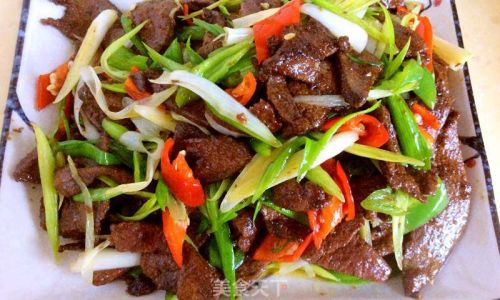
The Cultural Tapestry of Stir-Fried Pork Liver
In Chinese culinary traditions, offal dishes like pork liver hold a special place. Historically, frugality and resourcefulness were core values in kitchens, and no part of the animal went to waste. Pork liver, with its earthy flavor and tender texture when cooked properly, became a staple ingredient. Over centuries, chefs and home cooks refined techniques to transform this humble ingredient into a delicacy. Today, stir-fried pork liver is enjoyed across China, with regional variations reflecting local tastes and ingredients.
The dish’s popularity is also tied to its perceived health benefits. Pork liver is rich in iron, vitamin A, and B vitamins, making it a nutritious choice. However, its strong flavor and tendency to become tough if overcooked demand skillful preparation. This duality—between nourishment and culinary challenge—has solidified stir-fried pork liver’s status as a dish that rewards both patience and precision.
The Anatomy of a Perfect Stir-Fry
At its heart, stir-fried pork liver is a study in contrasts: tender liver slices coated in a glossy sauce, crisp vegetables like bell peppers or scallions, and aromatics like ginger and garlic that elevate the dish’s depth. Achieving this harmony requires attention to detail at every stage, from ingredient selection to plating.
Ingredients: Quality Matters
- Pork Liver: Freshness is non-negotiable. The liver should be deep red, firm, and free from a strong metallic odor. Soaking it in milk or vinegar water before cooking helps mellow its mineral taste.
- Aromatics: Fresh ginger, garlic, and scallions form the flavor backbone. Ginger cuts through the liver’s richness, while garlic adds pungency.
- Vegetables: Bell peppers, onions, or wood ear mushrooms provide texture and color. Red and green bell peppers, in particular, add a pop of vibrancy to the final dish.
- Sauce: A blend of soy sauce, oyster sauce, rice wine, and a touch of sugar creates the signature umami-rich glaze. Cornstarch thickens the sauce, ensuring it clings to every piece of liver.
Preparation: The Key to Tenderness
The liver’s delicate texture demands gentle handling. Slicing it against the grain into thin, uniform pieces ensures even cooking. Marinating the liver in a mixture of soy sauce, cornstarch, and rice wine tenderizes the meat and seasons it from within. Some chefs also add a pinch of baking soda to further soften the liver, though this step is optional.
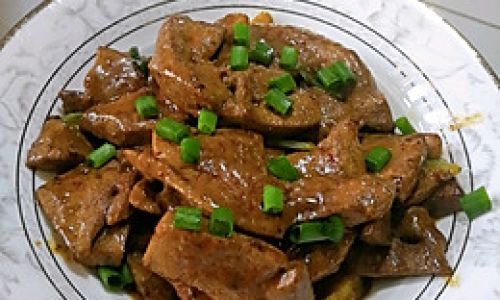
Vegetables are prepped to match the liver’s cooking time. Bell peppers are julienned, onions thinly sliced, and scallions cut into 2-inch segments. Ginger is minced, and garlic is either sliced or crushed, depending on the desired texture.
The Cooking Process: Fire and Finesse
Stir-frying is a high-heat, rapid-cooking technique that sears ingredients while retaining their crispness. For pork liver, this method is ideal, as it cooks the meat quickly, preventing it from becoming rubbery.
- Searing the Liver: The wok is heated until smoking hot, then coated with a thin layer of oil. The liver is added in batches to avoid overcrowding, ensuring each slice sears rather than steams. A quick 30-second sear on each side locks in juices and creates a caramelized crust.
- Aromatics and Vegetables: The liver is set aside, and the wok is recharged with a splash of oil. Ginger and garlic are stir-fried until fragrant, followed by vegetables. Bell peppers and onions are tossed until slightly softened but still crisp.
- Sauce and Assembly: The sauce is poured into the wok, and the liver is returned. Everything is tossed rapidly to coat the ingredients evenly. A final drizzle of sesame oil adds a nutty aroma, while a sprinkle of white pepper provides subtle warmth.
The Visual Symphony: Plating and Photography
A well-plated stir-fried pork liver dish is a feast for the eyes. The interplay of colors—deep brown liver, vibrant green scallions, and crimson bell peppers—creates a dynamic composition. Garnishes like toasted sesame seeds or fresh cilantro add texture and a hint of contrast.
For those capturing the dish through photography, lighting is crucial. Natural daylight or a soft, diffused light source enhances the dish’s natural hues without creating harsh shadows. A shallow depth of field focuses on the liver’s glossy surface, while the vegetables’ vibrant tones pop in the background.
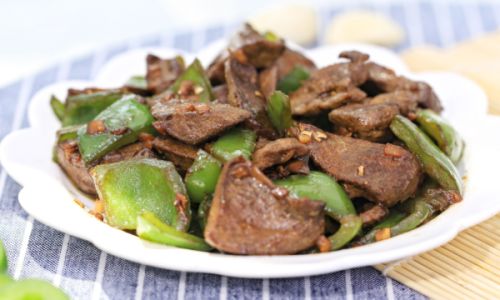
Regional Variations: From Sichuan to Cantonese
China’s vast culinary landscape has given rise to diverse interpretations of stir-fried pork liver.
- Sichuan Style: Bold and fiery, this version incorporates doubanjiang (fermented chili bean paste) and Sichuan peppercorns. The result is a numbing, spicy kick that complements the liver’s richness.
- Cantonese Style: Prioritizing freshness and subtlety, Cantonese chefs often pair liver with light soy sauce, ginger, and a splash of rice wine. The focus is on highlighting the liver’s natural flavor rather than masking it.
- Shanghainese Twist: In Shanghai, a touch of sugar and Shaoxing wine lends the dish a mild sweetness, balancing the liver’s mineral notes.
Health Considerations and Modern Adaptations
While pork liver is nutrient-dense, its high cholesterol content has led some to adapt the recipe. Modern variations might use leaner cuts, reduce the sauce’s sodium, or incorporate more vegetables. Vegetarian alternatives, such as marinated tofu or mushrooms, mimic the liver’s texture while offering a plant-based twist.
Conclusion: The Enduring Appeal of Stir-Fried Pork Liver
Stir-fried pork liver is more than a meal—it’s a celebration of culinary craftsmanship. From the sizzle of the wok to the final plating, every step honors tradition while inviting innovation. Whether captured in a photograph or savored at the dinner table, this dish embodies the balance of flavor, texture, and visual allure that defines Chinese cooking. As chefs and home cooks continue to reinterpret this classic, one thing remains constant: the joy of transforming a simple ingredient into a masterpiece.
In a world where food is as much about aesthetics as it is about sustenance, stir-fried pork liver stands as a reminder that beauty and nourishment can—and should—coexist on every plate.
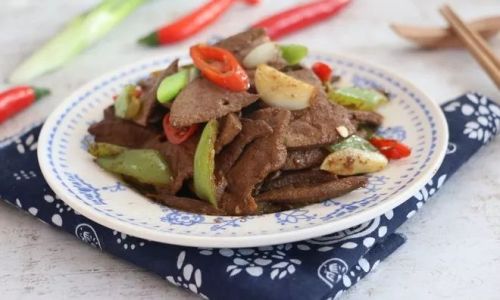
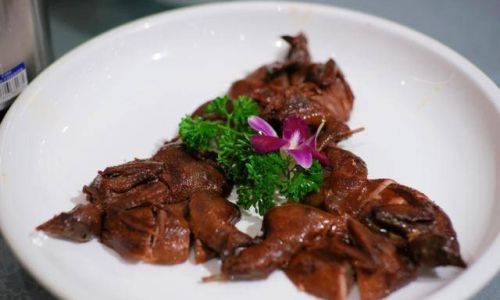
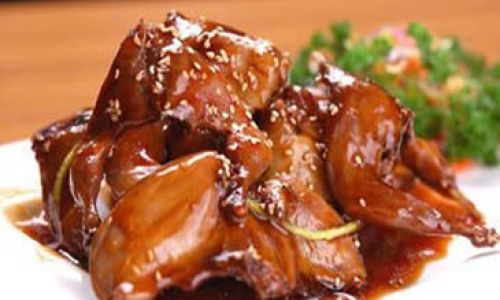
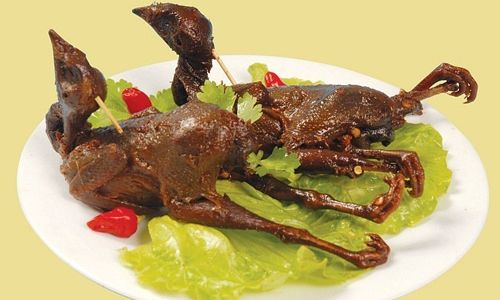
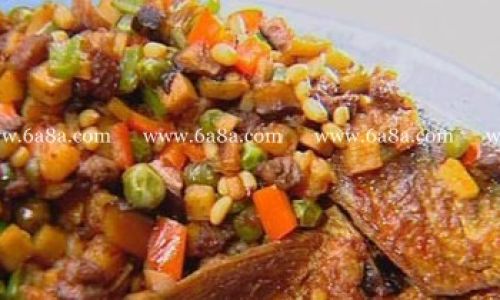
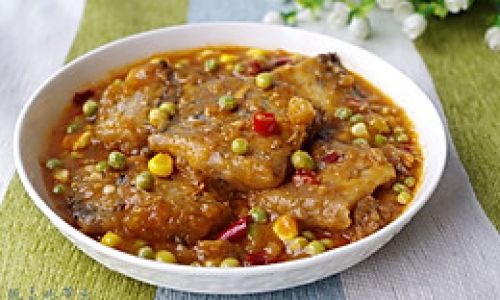

0 comments